NZXT H230 Silent Case Review
by Dustin Sklavos on September 13, 2013 12:00 PM EST- Posted in
- Cases/Cooling/PSUs
- NZXT
- ATX
- Case
Plugging in and powering on the NZXT H230, there were basically two ways things were going to go: it was going to have adequate airflow and middling acoustic performance, or it was going to have poor airflow and good idle acoustic performance. Given the modest hopes NZXT has for the H230, though, just about anything beyond our stock configuration is probably going to be a bit beyond what this case was intended for.
Unfortunately, even the modest task of cooling a stock Intel Core i7-2700K and an upper midrange video card with an open air cooler instead of a blower is a bit beyond the H230. The GTX 560 Ti we use is rated with a TDP of 170 watts, which is high but not astronomical.
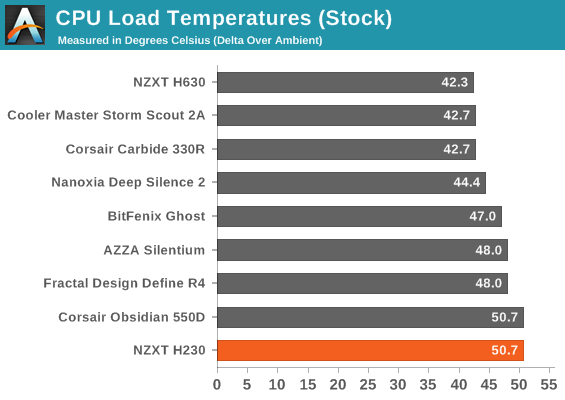
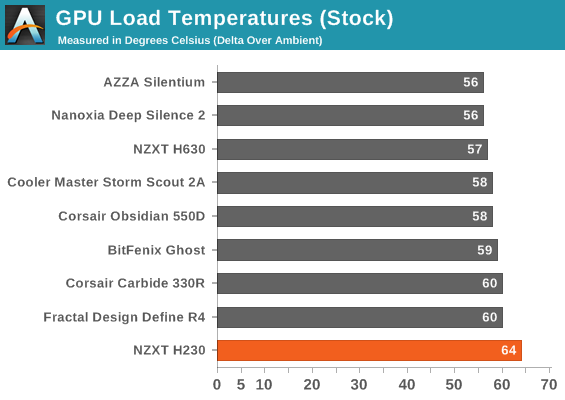
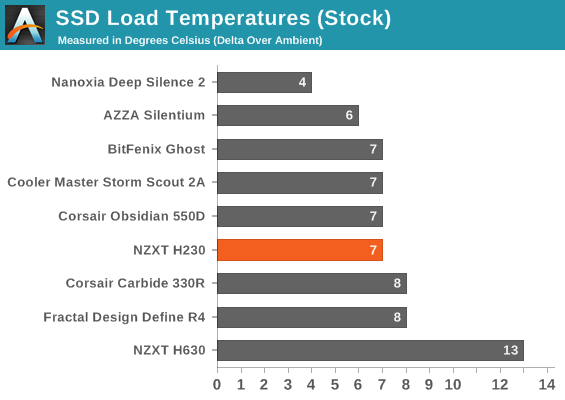
Every other silent case meets or beats the H230 thermally, and this is essentially "easy mode" right now. The cases included are mostly budget; this isn't a murderer's row of hardware but reasonable competition, and it's already not looking good.
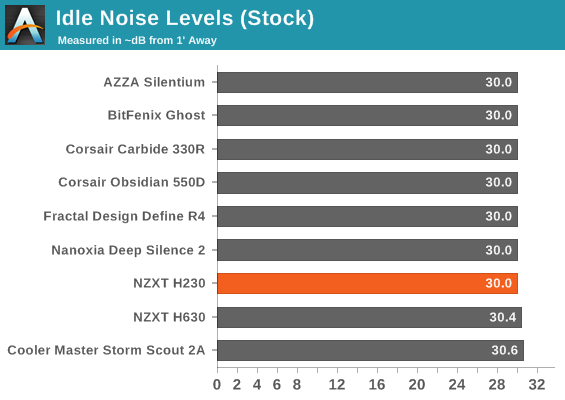
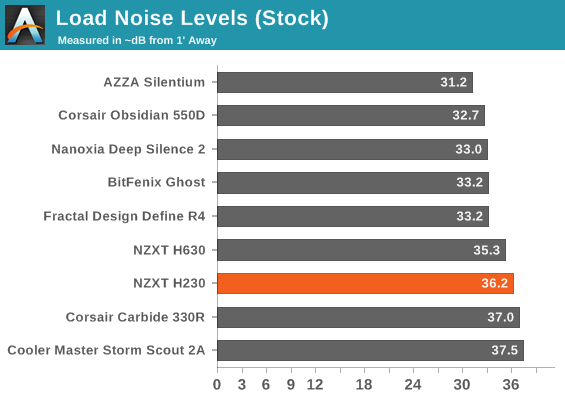
Poor thermals mean loud internal fans, and that's exactly what we run into. The H230 just doesn't have much in the way of cooling capacity, and as a result it's louder than most of the other cases under load.
Overclocking the testbed only made matters for the H230 worse.
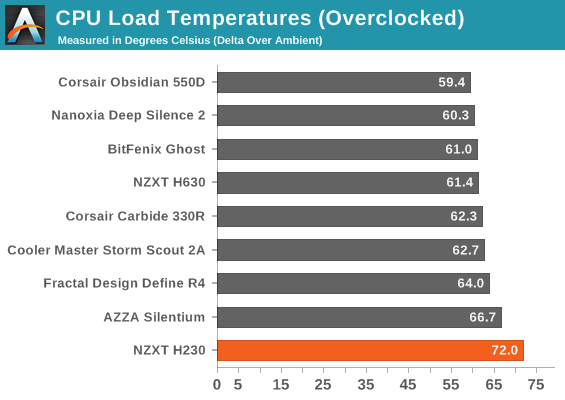
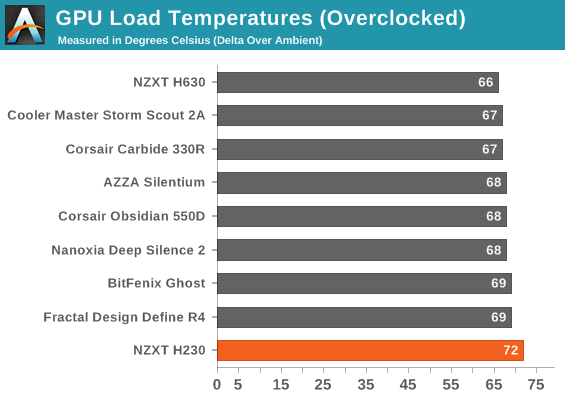
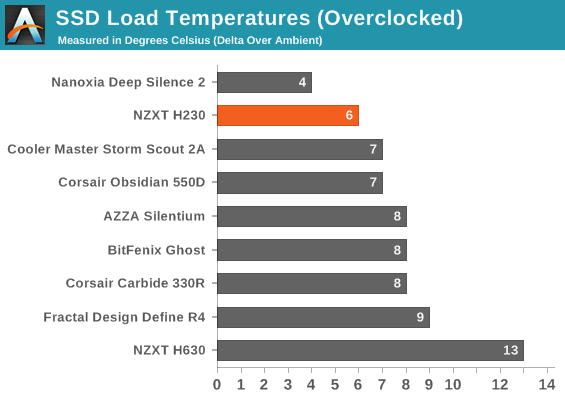
Overclocked thermals are pretty dire on almost every front but the SSD, which gets a healthy amount of totally unneeded cooling. The GTX 560 Ti and i7-2700K were both hitting temperatures well into the 90s, with the cores of the 2700K hitting as high as 98C in a 24C ambient room.
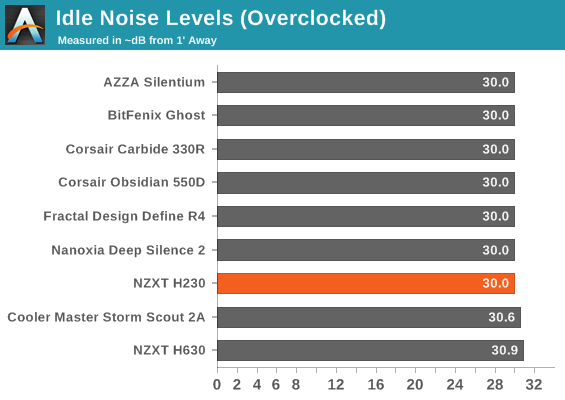
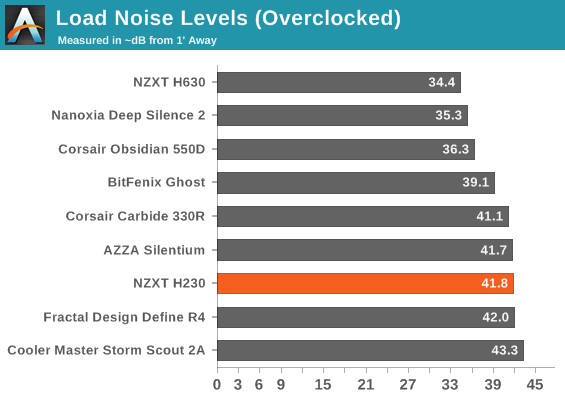
Noise levels go to hell right along with the thermal performance. The NZXT H230 was already having trouble keeping its components cool at stock speeds, bumping up stress just makes things worse.
To satisfy morbid curiosity, here are the test results from the full fat testbed, which goes well beyond the ~320W our overclocked testbed generates.
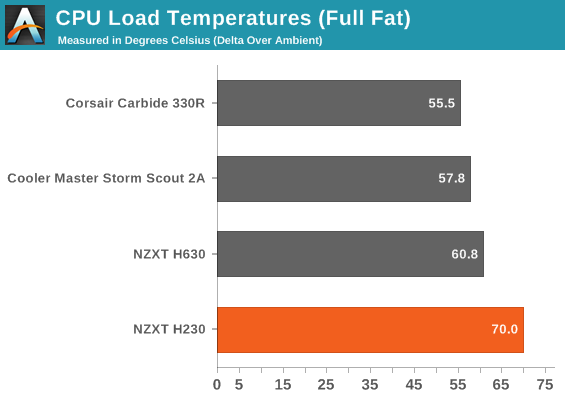
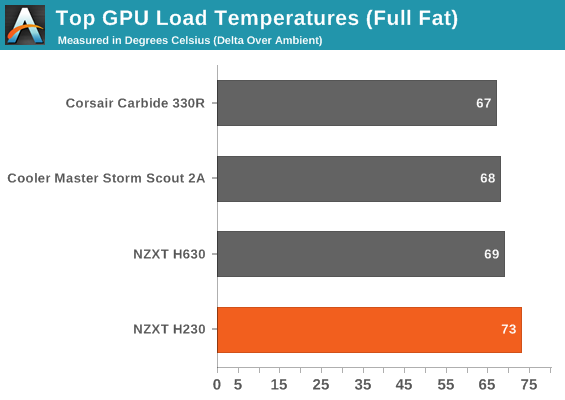
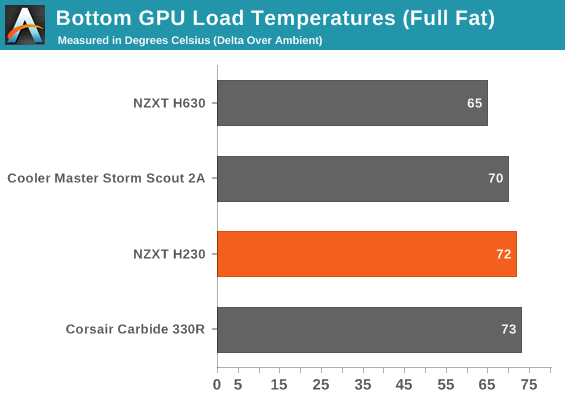
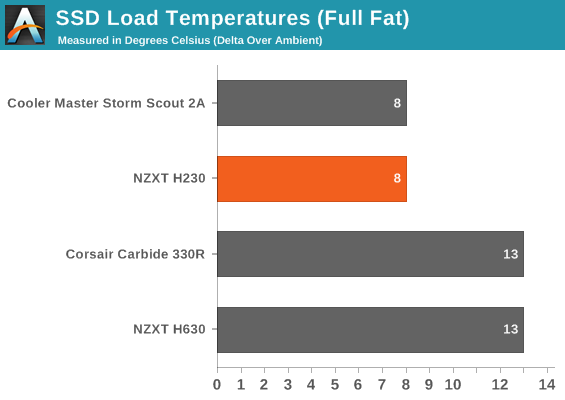
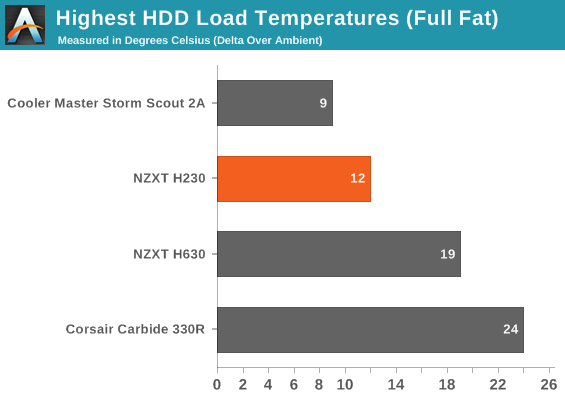
At least the storage is running cool?
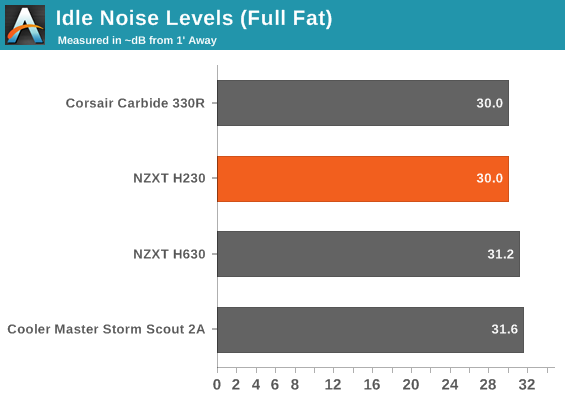
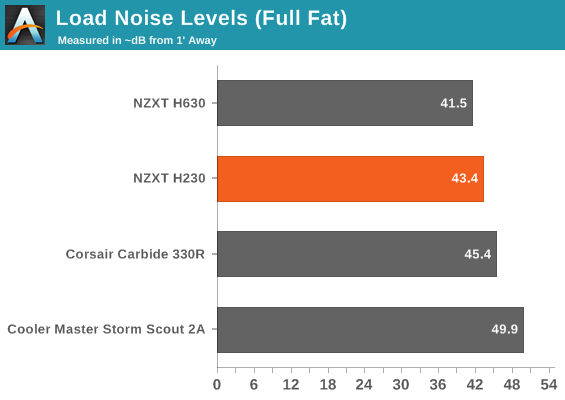
The H230 does some work containing the noise as its internals roast, but it should be abundantly clear at this point that this is not a case suited to even upper high end hardware. Those of you planning on using this for your AMD FX-9590 build will have to look elsewhere.










29 Comments
View All Comments
zero2dash - Friday, September 13, 2013 - link
I thought about buying one of these a few days ago but since the only 2 reviews out there for the case are not very flattering, I figured I'd wait for someone more worth their salt to review it.AT delivers as usual; thanks for the review Dustin.
This looks like a silent case built for computers that don't make a lot of noise to begin with....the onboard video, 1 HD, ≤ 430W PSU systems.
Guess I'll continue trying to lower the noise in my Core 3000 instead.
flemeister - Saturday, September 14, 2013 - link
You've got the right idea. =)First deal with the noise making components:
* Fans: fan control, undervolt, or change to better quality or quieter models (eg. for the PSU).
* Hard drives: 5400/5900RPM models to reduce vibration and high-freq. noise compared to 7200RPM models (relying on your SSD for speedy stuff). Also suspension with elastic cord, which can even be done in the internal 3.5" bays if they're wide enough. Or go all SSD. ^_^
That should be a marked improvement. But if you'd like to go further, get an enclosed case with solid panels, solid build quality (eg. Antec Solo, Antec P18x), mass damping and acoustic foam. Ideally, a case with not too restrictive ventilation. Generally though you'll have to sacrifice one of performance, temps or dust filtering to keep the noise down. Only under load though; at idle there should be no problem keeping the rig quiet. Few are so anal as to desire near silence at both idle and load. =)
WarrenSmith - Saturday, September 14, 2013 - link
Love my job, since I've been bringing in $5600… I sit at home, music playing while I work in front of my new iMac that I got now that I'm making it online( Click on menu Home)http://goo.gl/6N9nai
KLC - Friday, September 13, 2013 - link
"the perfect silent chassis for users looking for the bare essentials"Maybe 20 years ago a huge case was required for the bare essentials, but not anymore. With better CPUs that require lower power, with 4tb hard drives that negate the need for multiple hard drives, and with higher power integrated graphics that eliminate the need for GPUs, the bare essentials in 2013 are more like a small mini ITX box than gigantic case the size of microwave.
The PC industry is still living in the past.
et20 - Friday, September 13, 2013 - link
I completely agree.At this point, in any case review I see I immediately check for for factor and ignore everything larger than microATX.
JoanSpark - Monday, September 16, 2013 - link
so true.. where are the reviews of mini-ITX or m-ATX cases?lwatcdr - Saturday, September 14, 2013 - link
For the average home user yes. Even an ITX board would do. Thing is that the average home user buys a PC or these days a notebook or even a tablet.1. Integrated graphics are not good enough for high end CAD, gaming, or video editing.
2. Multiple monitors are becoming the norm for developers and large high resolution monitors are becoming cheap.
3. People do still roll their own NAS boxes so lots of drives is a plus for them.
Bare essentials vary by use case.
For me it would be a good nVidia graphics card, i5 or i7, at least 16gb of ram, one SSD boot and two HDDs in Raid for storage. I like slots because I do some hardware work as well and like to add at least one real serial port.
Grok42 - Saturday, September 14, 2013 - link
Every thing you describe is handled by common mITX systems. I build a mITX system with an Intel i7 3770k, 16GB of ram, Nvidia 660ti and a 840pro SSD. Your need for a real serial port is pretty unusual given that I work for a company that does tons of hardware development and everything has USB interfaces these days even when it's serial over USB.JoanSpark - Monday, September 16, 2013 - link
Zotac H87-ITX... besides the other stuff you need we find.. "internal connectors: .. serial COM port header".Admitted though.. with mATX this would be easier ;-)
Still no need for full blown ATX cases anymore for 90% of the users of such hardware.
Grok42 - Sunday, September 15, 2013 - link
I completely agree. I've noticed a lot more "mini" GPUs coming out lately as well which will make it even easier to build mITX systems. I guess everyone is getting the picture that small cases are the future except the case manufactures.My only complaint with mITX is the PSU. While there are tons of good ones out there and most mITX cases support full ATX or small ATX PSUs, there is a lack of a specific standard for small ATX PSU that makes picking a PSU a case by case decision.